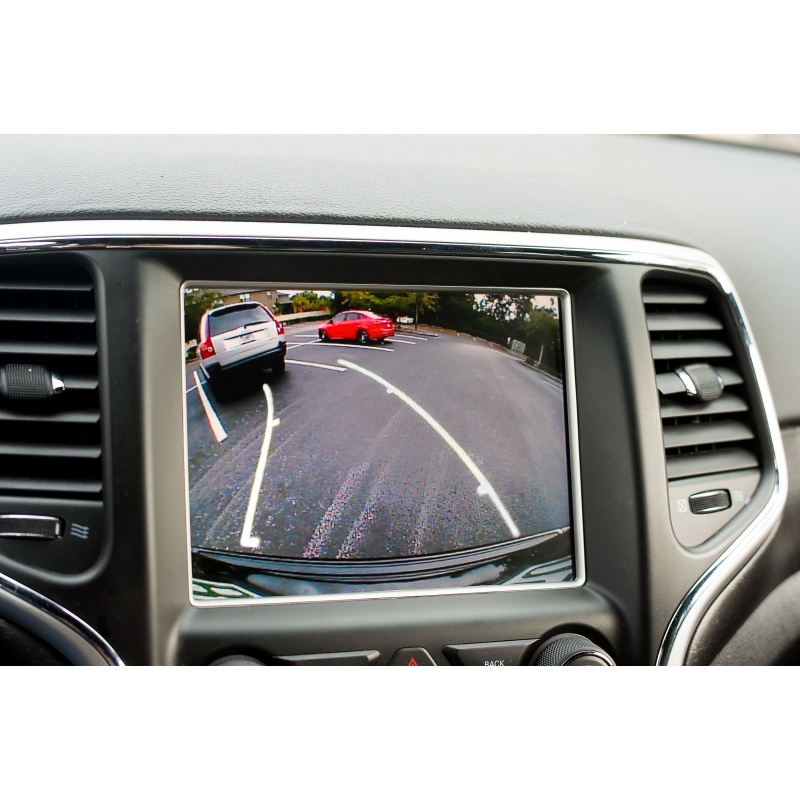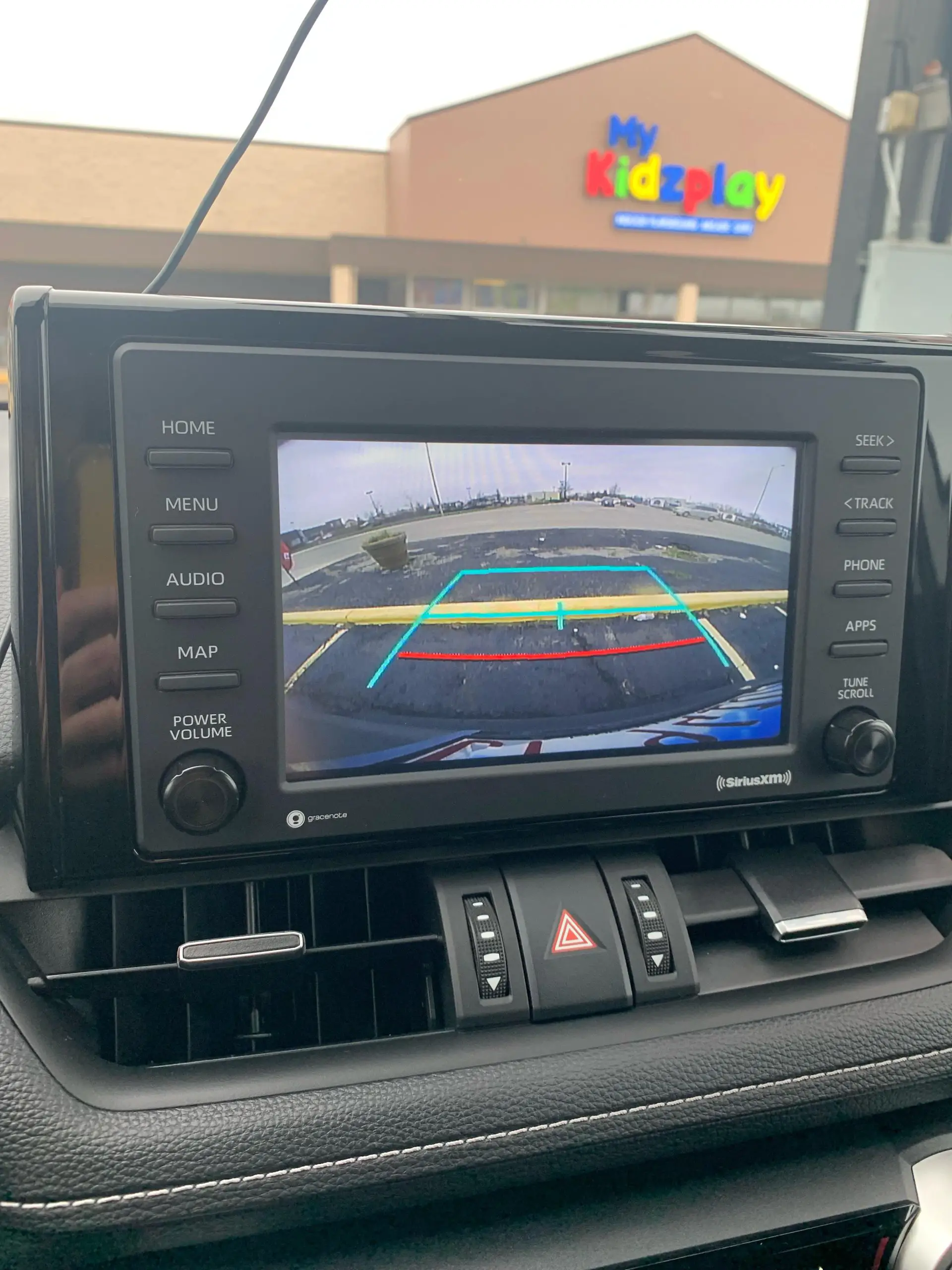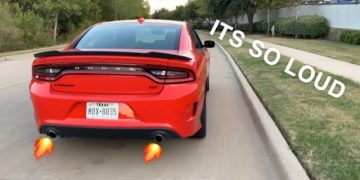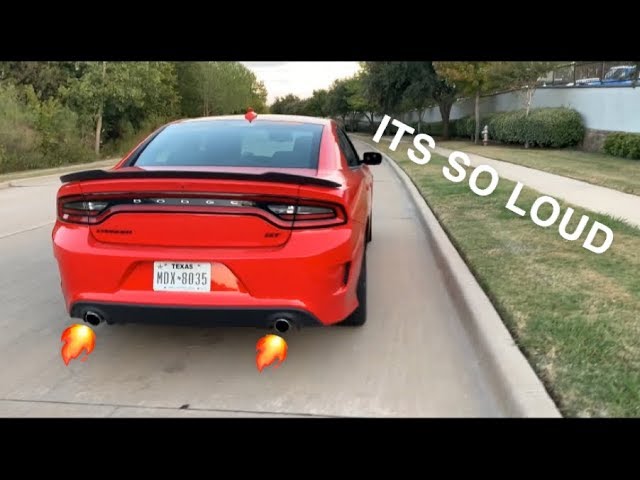Backup cameras with projected path overlay provide a visual representation of the vehicle’s trajectory, aiding in precision parking and maneuvering. In contrast, dynamic gridlines adapt to steering inputs, offering real-time guidance based on the vehicle’s direction.
Both features enhance parking assistance and improve driver confidence, but the choice between them depends on individual preferences and driving habits. As advancements in automotive technology continue to elevate driver safety and convenience, choosing the right backup camera system is a crucial decision for vehicle owners.
Understanding the differences between a backup camera with projected path and one with dynamic gridlines can help consumers make an informed choice when selecting a vehicle or upgrading their existing one. This article delves into the distinct advantages and functionalities of each system, providing valuable insights for drivers seeking to optimize their parking experience and overall safety on the road.
Table of Contents
ToggleBackup Camera Technology Evolution
As automotive technology continues to advance, the evolution of backup camera systems has played a crucial role in enhancing driver safety and convenience. From basic rear-view cameras to advanced systems, the innovation in backup camera technology has revolutionized the way drivers navigate and park their vehicles. This blog post aims to explore the progression of backup camera technology and compare the features of backup cameras with projected path versus dynamic gridlines.
From Basic Rear-view Cameras To Advanced Systems
- Initially, rear-view cameras were designed to provide a simple visual aid for drivers when reversing their vehicles.
- These early systems primarily offered a direct feed of the area behind the vehicle, aiding in the detection of obstacles and pedestrians.
- The evolution of backup camera technology has seen the integration of advanced features such as dynamic gridlines and projected path guidelines.
- These systems utilize sophisticated image processing and sensor technology to provide drivers with enhanced spatial perception and guidance during maneuvering.
The Role Of Backup Cameras In Modern Car Safety
- Backup cameras contribute to modern car safety by offering drivers improved rearward visibility, reducing the risk of collisions and accidents while reversing.
- The integration of gridlines and projected path guidance facilitates precise maneuvering, aiding in parking and navigating tight spaces with confidence.
- Modern backup camera systems often incorporate additional features such as collision detection and cross-traffic alerts, further enhancing driver safety and the prevention of accidents.
- These systems utilize advanced sensors to provide real-time warnings and alerts, mitigating the potential for collisions while reversing.
Projected Path Cameras Explained
A projected path backup camera is a type of advanced rearview camera system commonly found in modern vehicles. This innovative technology provides drivers with a visual aid, displaying the vehicle’s projected path based on the steering wheel position, making parking and reversing maneuvers more precise and safer.
What Is A Projected Path Backup Camera?
A projected path backup camera is an integrated safety feature in vehicles that displays a visual guide on the screen while in reverse gear. It uses sensors and advanced software to track the steering wheel’s position and translates it into a projected path line on the camera feed, helping drivers anticipate the vehicle’s trajectory.
Key Features Of Projected Path Systems
Projected path backup camera systems offer several key features that enhance the overall driving experience:
- Dynamic guidance: The projected path adjusts in real-time based on the driver’s steering input, providing accurate guidance as the vehicle moves.
- Obstacle detection: These systems often integrate obstacle detection, alerting drivers to potential hazards within the projected path.
- Multi-angle views: Some cameras offer multiple viewing angles, allowing drivers to switch between different perspectives for a comprehensive view of the surroundings.
Benefits Over Traditional Backup Cameras
Projected path backup cameras offer significant advantages over traditional backup cameras, including:
- Enhanced precision: The projected path provides a clearer indication of the vehicle’s trajectory, helping drivers maneuver with greater accuracy.
- Improved safety: By visualizing the projected path, drivers can better avoid obstacles and hazards, reducing the risk of collisions during reversing and parking.
- Convenience: The advanced guidance offered by projected path systems simplifies tight parking and navigating in confined spaces, making it easier for drivers to maneuver their vehicles.
Dynamic Gridlines Functionality
In modern vehicles, backup cameras are an essential safety feature that allows drivers to maneuver in tight spaces with ease and confidence. Among the features that enhance the usability of backup cameras, dynamic gridlines have gained popularity due to their ability to provide accurate guidance during parking and maneuvering. Understanding the dynamic gridlines in backup cameras and how they enhance driving experience can help you make an informed decision when choosing a backup camera system for your vehicle.
Understanding Dynamic Gridlines In Backup Cameras
Dynamic gridlines in backup cameras are a visual aid that assists drivers in gauging the distance between their vehicle and potential obstacles when reversing. Unlike static gridlines, which simply indicate the width of the vehicle, dynamic gridlines are adaptive and move based on the steering wheel position, providing a more accurate representation of the vehicle’s path as it maneuvers in reverse.
How Dynamic Gridlines Enhance Parking And Maneuvering
Dynamic gridlines play a crucial role in enhancing the parking and maneuvering experience for drivers. By adjusting in real-time according to the driver’s steering inputs, these gridlines provide a clear visual reference of the vehicle’s trajectory, enabling more precise positioning when backing into a parking space or navigating through confined spaces. This functionality not only improves safety but also reduces the likelihood of minor collisions or scrapes, making it an invaluable feature for both experienced and novice drivers.
Backup Camera With Projected Path Vs Dynamic Gridlines
When it comes to driving safety, having an effective visual aid can make a significant difference. One of the key components of modern vehicle safety technology is the backup camera, providing crucial assistance to drivers when reversing. The choice between a backup camera with projected path and one with dynamic gridlines can impact driver decision-making and safety in various ways. Let’s explore the differences and implications of these visual aids.
Comparing Visual Aids In Driving Assistance
Both backup camera systems offer visual guidance to assist drivers in maneuvering their vehicles in reverse. However, the way they present this guidance differs.
| Feature | Backup Camera With Projected Path | Backup Camera With Dynamic Gridlines |
|---|---|---|
| Visual Representation | Displays a path line indicating the trajectory of the vehicle’s reverse movement. | Shows dynamic gridlines that adjust to the steering wheel position, illustrating the potential path of the vehicle. |
| Adaptability | Provides a fixed projected path, which may not account for steering adjustments. | Adjusts the gridlines based on steering wheel movement, offering real-time guidance. |
| Visibility | Offers a clear visual indication of the vehicle’s projected path. | Provides a more responsive visual representation that adapts to steering changes. |
Impact On Driver Decision-making And Safety
The choice between a backup camera with projected path and dynamic gridlines can significantly influence how drivers make decisions while reversing and impact overall safety.
- Projected Path: Drivers may find it easier to follow a fixed trajectory, but this could lead to potential blind spots or obstacles not accounted for in the projected path, posing safety risks.
- Dynamic Gridlines: The real-time adjustment of gridlines based on steering input can enhance drivers’ awareness of their vehicle’s surroundings, potentially reducing the likelihood of collisions or mishaps during reverse maneuvers.
Ultimately, the comparison of these visual aids highlights the importance of choosing a backup camera system that not only provides guidance but also promotes proactive decision-making and situational awareness for enhanced safety.
Making The Right Choice For Your Vehicle
When it comes to selecting the best backup camera system for your vehicle, it is essential to evaluate the features and functionalities that align with your specific needs. Making the right choice for your vehicle ensures enhanced safety and convenience during reversing maneuvers.
Factors To Consider When Choosing A Backup Camera System
Before making a decision, it’s important to consider several factors that can impact the effectiveness of a backup camera with projected path or dynamic gridlines.
- Image clarity and resolution
- Field of view and angle coverage
- Integration with existing in-car displays
- Weather and low-light performance
- Added features such as parking sensors
Having a clear understanding of these aspects will help in evaluating the most suitable backup camera option for your vehicle.
Compatibility With Different Vehicle Types And Driver Needs
One crucial aspect to consider is the compatibility of the backup camera system with various types of vehicles and the specific needs of different drivers. The system should be adaptable to a range of vehicle models and offer customization options to meet individual preferences.
| Vehicle Types | Driver Needs |
|---|---|
| Compact cars | Enhanced maneuverability and parking assistance |
| SUVs and trucks | Improved visibility for larger vehicles |
| Commercial vehicles | Advanced guidance for cargo loading and unloading |
Considering the diverse requirements of different vehicle types and drivers will help in choosing a backup camera system that provides the most value and utility.

Credit: catalog.echomaster.com
Frequently Asked Questions Of Backup Camera With Projected Path Vs Dynamic Gridlines
What Are The Benefits Of A Backup Camera With Projected Path?
A backup camera with projected path provides visual guidelines, enhancing parking accuracy and reducing blind spots. It offers improved safety and convenience, making parking and maneuvering in tight spaces easier for drivers. The projected path helps in judging the distance between the vehicle and obstacles, promoting safer parking.
How Do Dynamic Gridlines In A Backup Camera Make A Difference?
Dynamic gridlines adjust based on the steering wheel position, providing a more precise parking guide. This feature helps drivers to align their vehicle accurately, preventing potential collisions and making parking in tight spaces more manageable. The dynamic gridlines offer an intuitive visual aid for parking and maneuvering.
What Factors Should Be Considered While Choosing A Backup Camera?
When selecting a backup camera, consider factors such as resolution, field of view, night vision capabilities, and weather resistance. These features contribute to the camera’s performance under various conditions, ensuring clear visibility and reliable functionality. Additionally, compatibility with the vehicle’s existing systems is essential for seamless integration.
Conclusion
Both backup camera systems offer unique benefits to drivers. The projected path provides a clear visual aid for backing up, while dynamic gridlines offer real-time guidance. Consider the specific needs of your vehicle and driving habits when choosing between the two.
Ultimately, the right backup camera can vastly improve safety and convenience on the road.











